05: An Evening with the Monks
Cycling across Japan Days 8 and 9: Wakayama to Koyasan, Koyasan to Sakurai.
The wheels on the bike go round and round — Songs for cyclists.
Day 8 - Wakayama to Koyasan (64km)
Two years ago, just before I moved from Tokyo to London, I took a long awaited trip to Koyasan. There, set amongst giant cedar trees on an 800-meter high plateau in deepest Wakayama Prefecture are 120 temples dedicated to Shingon Buddhism. In the heart of the forest, a vast graveyard and the grandest temple of them all, Okunoin, where the monk Kukai, founder of this particular sect of Buddhism, rests in eternal meditation since his enlightenment in the mid 800s.
Many of these temples now open their doors to guests to stay overnight. It is a rare treat to experience the inner workings of a temple: the cloistered gardens, perfectly manicured; the ceremonial rooms, gold glinting in the soft light; the shojin ryori, elegant vegetarian food, perfected by the monks over 1,000 years. I so enjoyed the experience two years ago that I knew Koyasan had to feature on this bicycle trip. And oh how good that food would taste after the 1,000 meter climb to reach it.
From Wakayama, we set out for Koyasan shortly after 10am and were immediately distracted by the shop opposite our hostel that proudly asked “Are you craving something sweets?” Yes, banana bread, thank you. Sweets craving sated, we picked up the river path out of Wakayama, a proper, segregated cycle route that runs for 30 kilometres inland atop the city’s flood levee. The path was a hive of activity including, but not limited to, a Mario-themed fun run, a unicycle training camp, multiple baseball matches and a Sunday morning cycle club. On the safe side of the levee grew plum orchard after plum orchard, used to feed the nation’s appetite for umeboshi (pickled plums). And swaying gently in the breeze, either side of the cycle path were wildflowers, blooming in the May sun.
At the town of Katsuragi the flat land ran out and it was time to turn to the mountains. Or was it? Perhaps a spot of lunch before the climb. There was only one restaurant listed on Google Maps — Sakana Store — with only one review written six months prior. The odds weren’t good for escaping the clutches of the convenience store lunch. We cycled up to the restaurant to find it closed, while a man watered his plants outside the shop next door. He asked us what we were after, and when we explained our quest for food, he introduced himself as Keita, the co-owner of the restaurant. “It is,” he said, “closed for the day, but would you like a drink?”
We gratefully accepted his offer, and he continued to explain that his wife, Junko, had only recently opened the shop, and actually maybe there might be some food available after all. He unfolded a camping bench, placed it in the street and asked us to wait while he called Junko. Soon she emerged, along with their three kids, Hana, Sana and Yotaro, and a whole box full of Transformer toys.
“We don’t have much, but do you eat game?”asked Keita, pointing at a pair of sausages. “A friend of ours travelled to Germany to learn how to make weiner, and now makes sausages from the deer he hunts.” Hana emerged from behind her Dad, holding a cold drink in each hand. “This one is apricot, and this one is yuzu.” While Junko prepared lunch, five-year-old Yotaro showed us his Transformers, and Tom inspected a wall full of heavy cast iron pans from Tottori Prefecture. “I think I’m going to buy one,” Tom said. “But we’re at the bottom of a 1,000m climb…” I reminded him. Tom bought the pan, a solid three kilos on an already well-loaded bike. “Do you want to post it to Tokyo?” I asked. “No, I want to be reminded of this climb every time I fry an egg in London,” he replied.
Lunch was sublime, deer sausage bagels with a salad from the family farm, made all the better by Junko and Keita’s unnecessarily kind hospitality. As we were saying our farewells to the family, a Mr. Kubota turned up bearing his latest crop of tomatoes for the restaurant. A small bag for the road, and we were off to Koyasan, a few thousand pedal strokes to enlightenment.
In Koyasan we stayed in Ryusenin temple, and were welcomed by a trio of monks at the entrance. The most senior, Wako-san, guided us around the temple, explaining it had been on the same site for over 1,000 years, though the original temple had burned down in the 1700s (the story of pretty much every old wooden building in Japan). Then he explained the rules. Dinner would be at 5.30pm, “please don’t be late”, the temple gates would be locked at 9pm, “please don’t be outside,” and we’d be expected to join the ceremony at 6.30 the next morning, “please no pyjamas”.
The temple was serene. In the front courtyard was a rock garden, with ornamental pines gently twisted and bent over decades into fantastical shapes. The back garden centred around a pond, the mountain flowers in full bloom. Guest accommodations were arranged along two edges of the pond, connected by long wooden corridors, with shoji doors leading into austere tatami rooms. Dinner was all vegetarian, with small dishes of yuba, bamboo shoots, pickled mushrooms, okra and mountain potato, served alongside a donabe filled with baby corn, aubergine and maitake mushrooms.
It was all delicious, but no match for our post climb hunger. With some embarrassment we snuck out past the monks into town to pick up some extra food from the nearest convenience store. As the temple gong struck nine and the gates were firmly locked, we fell asleep on full stomachs.
Day 9 - Koyasan to Sakurai (64km)
At 6.30 we gathered for morning prayers. It had begun to rain overnight, and the ceremony room reverberated with the patter of the rain drops. The air was heavy with incense smoke and the room was dimly lit. In the shadows, gold glinted, and in the deepest depths stood an ancient statue of Yakushi Nyorai, the Buddha dedicated to Medicine. Tributes lay at the statue’s feet: huge, waxy apples, dainty little tea cakes and a ¥100 tin of chopped tomatoes.
The temple’s five monks filed into the room fully kitted out in their robes, and began to chant their sutras at a pitch and timbre somewhere between spoken word and throatsinging. The monks knelt almost perfectly still throughout the entire 30 minute ceremony, while we unpracticed onlookers, unused to sitting still, fidgeted nonstop. At the end of the ceremony we were anointed with incense ash, and invited up to the statue to offer a prayer. Though not Buddhist, it felt right to ask this ancient statue of the Medicine Buddha to keep us safe on this road, to protect our knees on the climbs, and (please, oh please) speed the recovery of our saddle sores.
After the ceremony I caught up with Wako-san, the monk who had shown us around the temple. Aged 30, he had been at the temple since he turned 18, and spent years in training (a huge amount of which seemed to be cleaning the temple. “A clean temples leads a clean soul”, explained Wako-san, but it seems a suspiciously convenient source of free labour). When deemed ready, he was sent to another temple in Koyasan alongside a dozen other apprentice monks, where he spent 100 days doing yet more cleaning, “chanting incessantly” and sleeping for about four hours a night to graduate into full monk-dom. He said he expected to be at the temple until he died, and would likely never marry (male and female monks do sometimes get married in secret, he told me.) The temple did have a Netflix account, which they were allowed to use once the cleaning was complete. I wondered what impact the coming and going of tourists had on someone like Wako-san, whether it made him question his existence in the strict confines of temple life, or whether it bolstered his resolve.
We left Ryusenin into the rain and headed for Okunoin temple — where Kukai sits in meditation — and the moss covered graveyard that surrounds it. Down in the valley it had been in the high 20s. Up on this windy mountain top, the huge cedars damp with rain, it was just 8°C. We wandered through the graveyard, offering coins to woollen-hat wearing jizo, guardians of travellers, and came to the realisation that unlike them, we were not kitted for the weather. We had no waterproof gloves, and our hands were freezing on the brakes. Enter Family Mart, frequent solution to all problems Japan, and a pair each of bright green Marigold washing up gloves to fend off the rain. Goretex is out, latex is back in.
Kitted out, we whizzed down the mountain, undoing the decent from the previous day, choosing the narrowest of single-track roads to exit Koyasan. It was an intense descent in the wet, brakes howling and fingers cramping on the hoods as we plummeted down through the forest back to the plains, the plum trees, and the warmth of valley floor. We had not achieved much in the way of enlightenment during our short affair with Buddhism, but we were a couple of days closer to our end goal, now with the blessing of the Medicine Buddha.
Thank you for reading, and for following our cycle so far. If there are any parts of the trip you’d like to know more about, please let me know in the comments.
Oscar
p.s. please subscribe to get this newsletter straight into your inbox, and share it with anyone you think might enjoy it. You can also follow along on Instagram, where I’ll share more photos and video.
Stats
Distance covered: 794km
Vertical: 7,748 meters
Onigiri eaten: 22
Current location: Ise
Day 8 elevation profile:
Day 9 elevation profile:




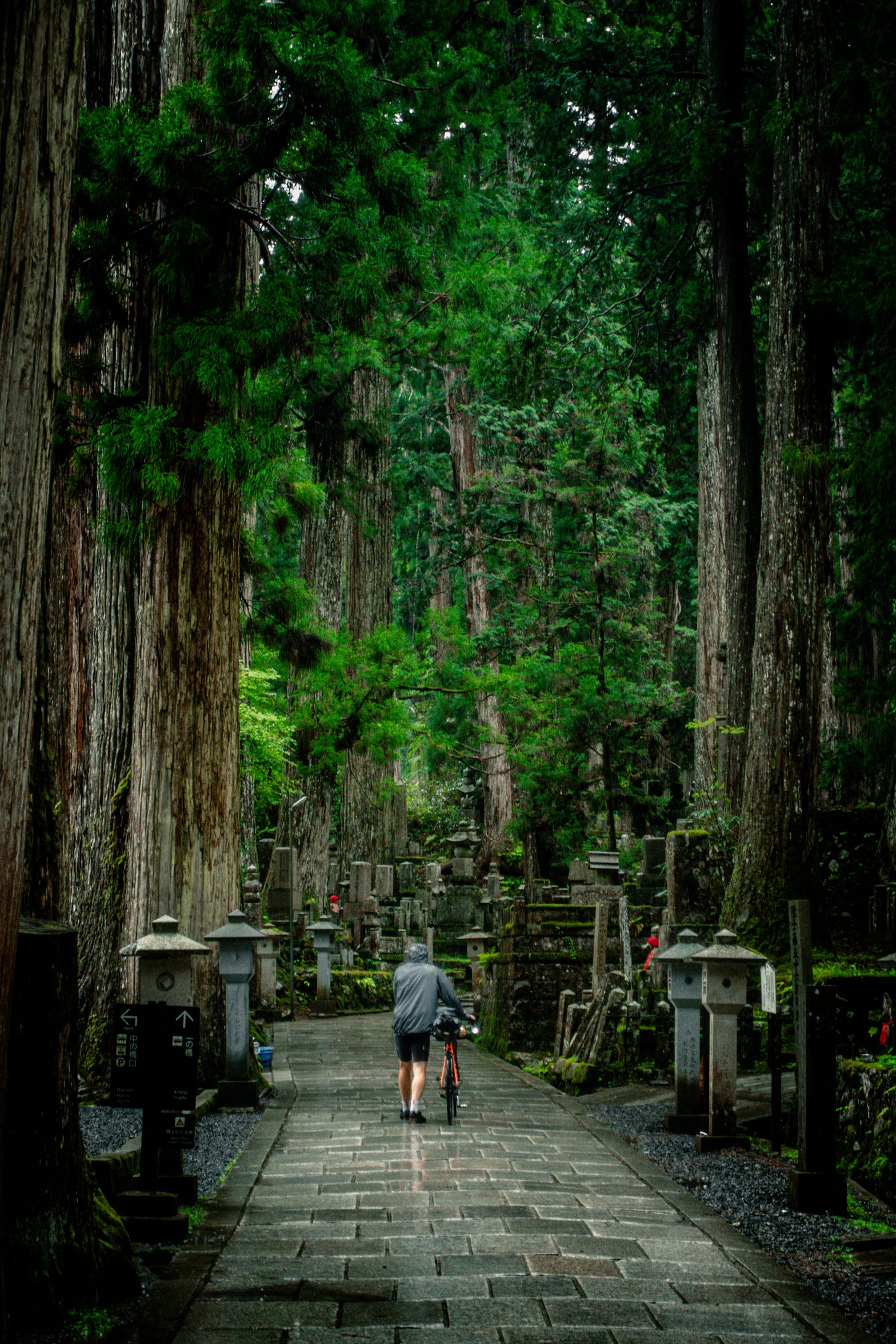
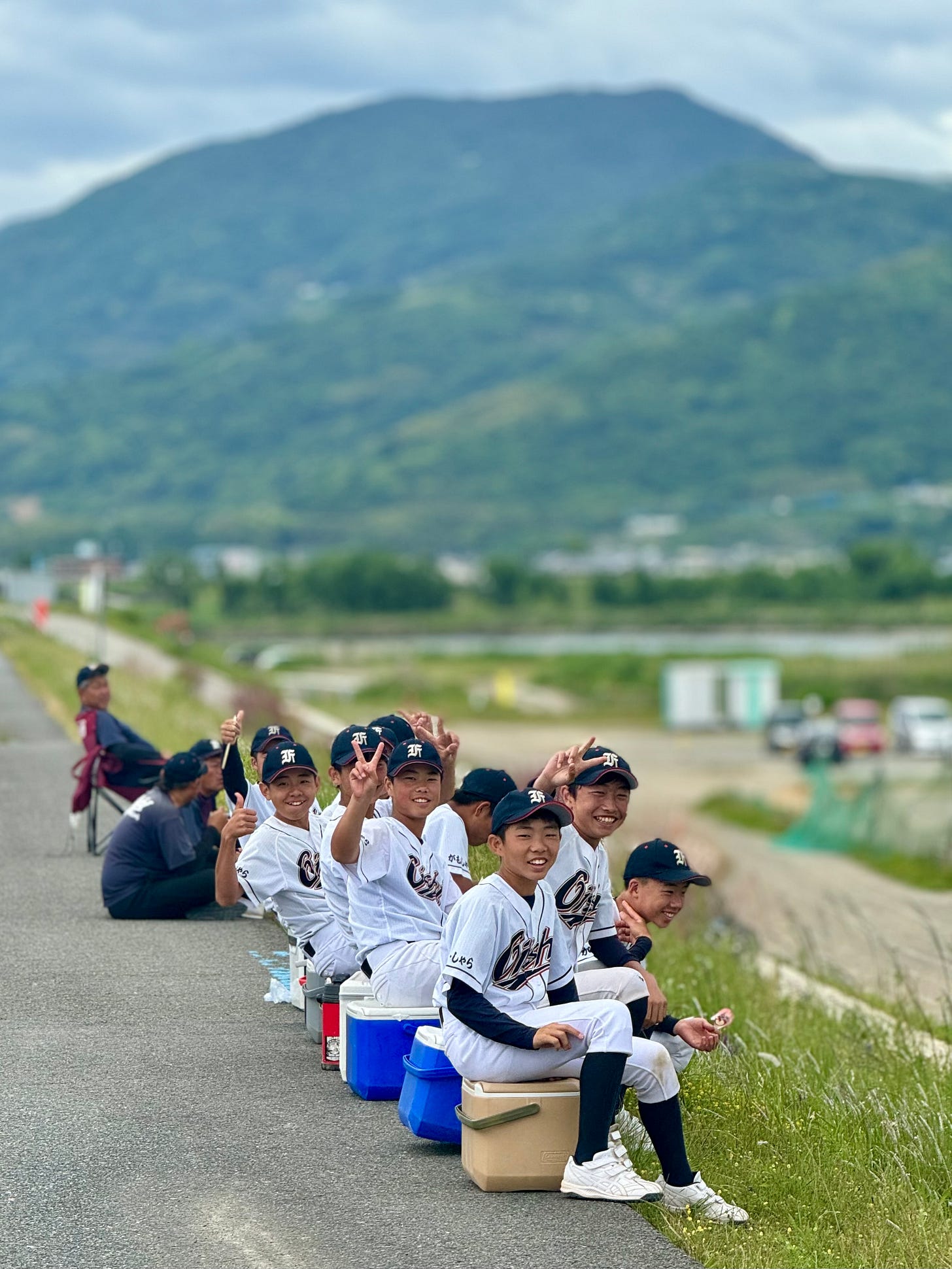
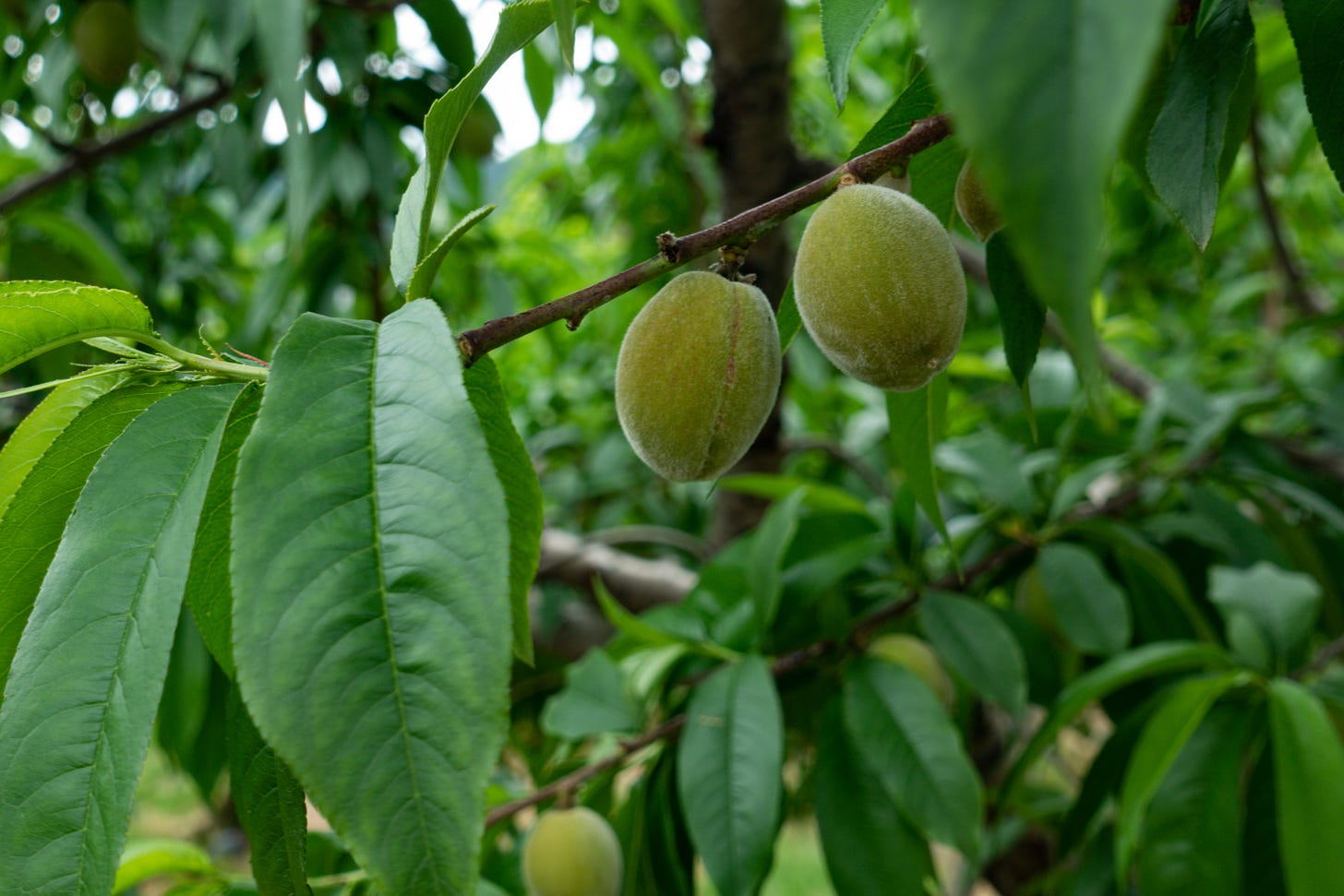
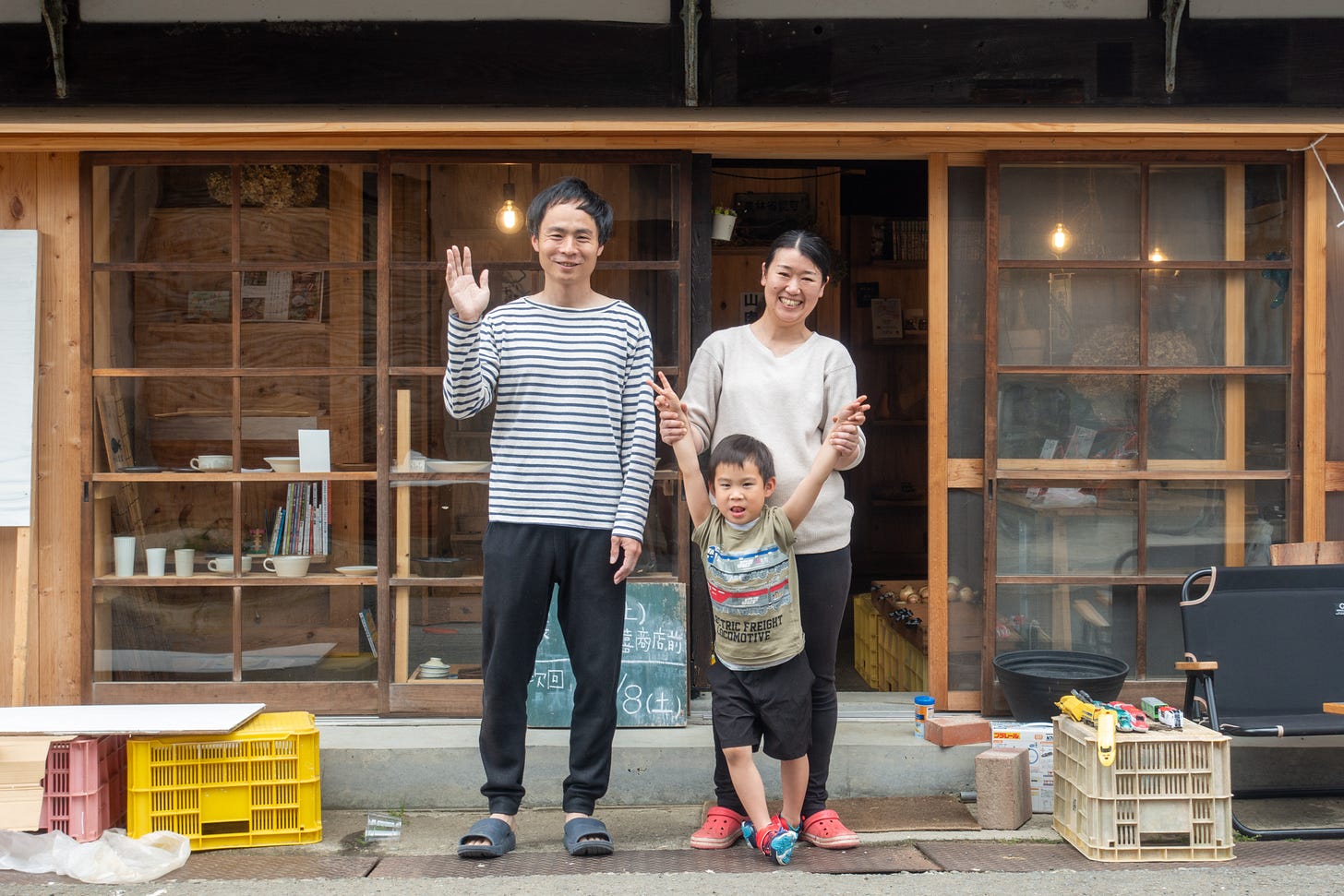
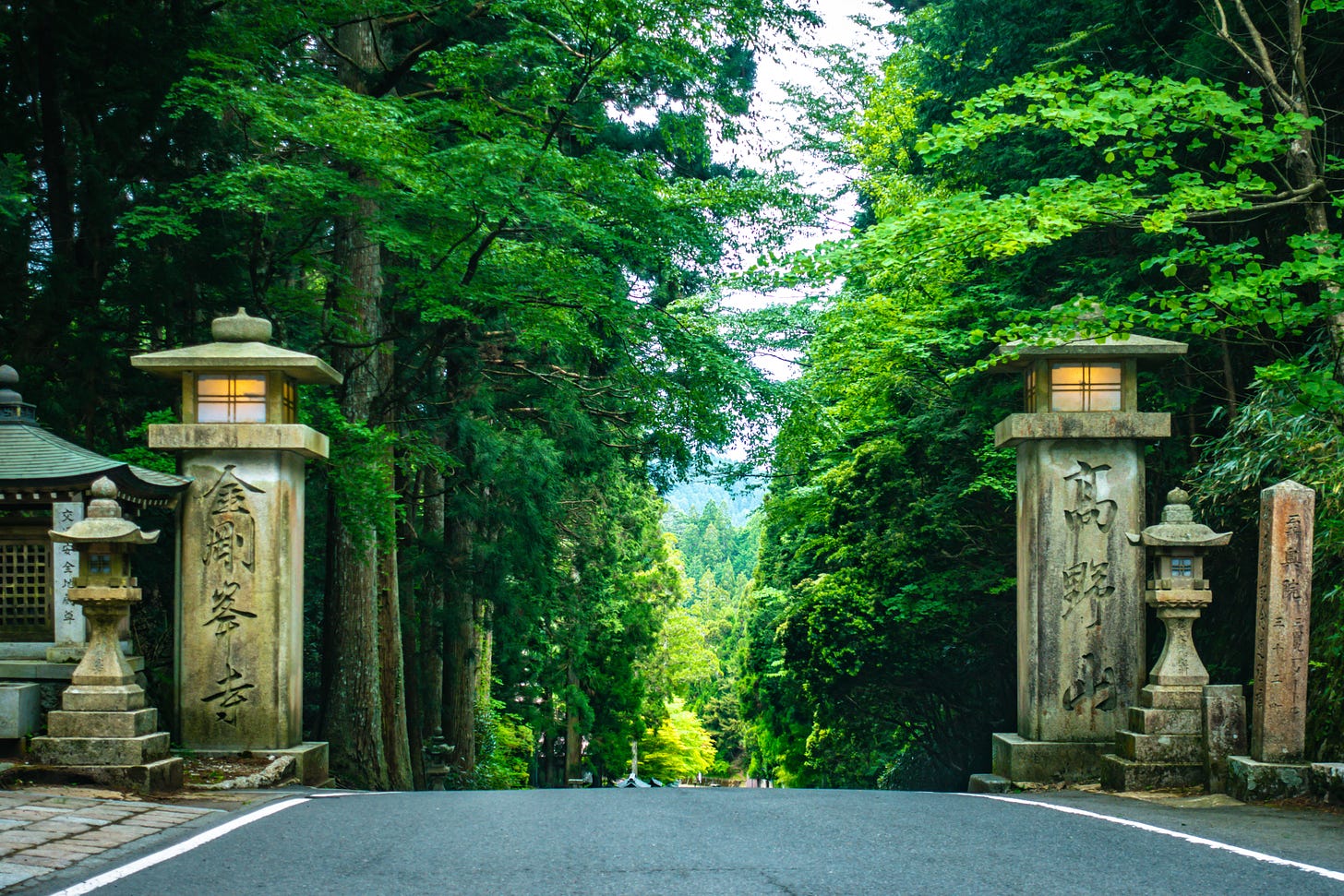
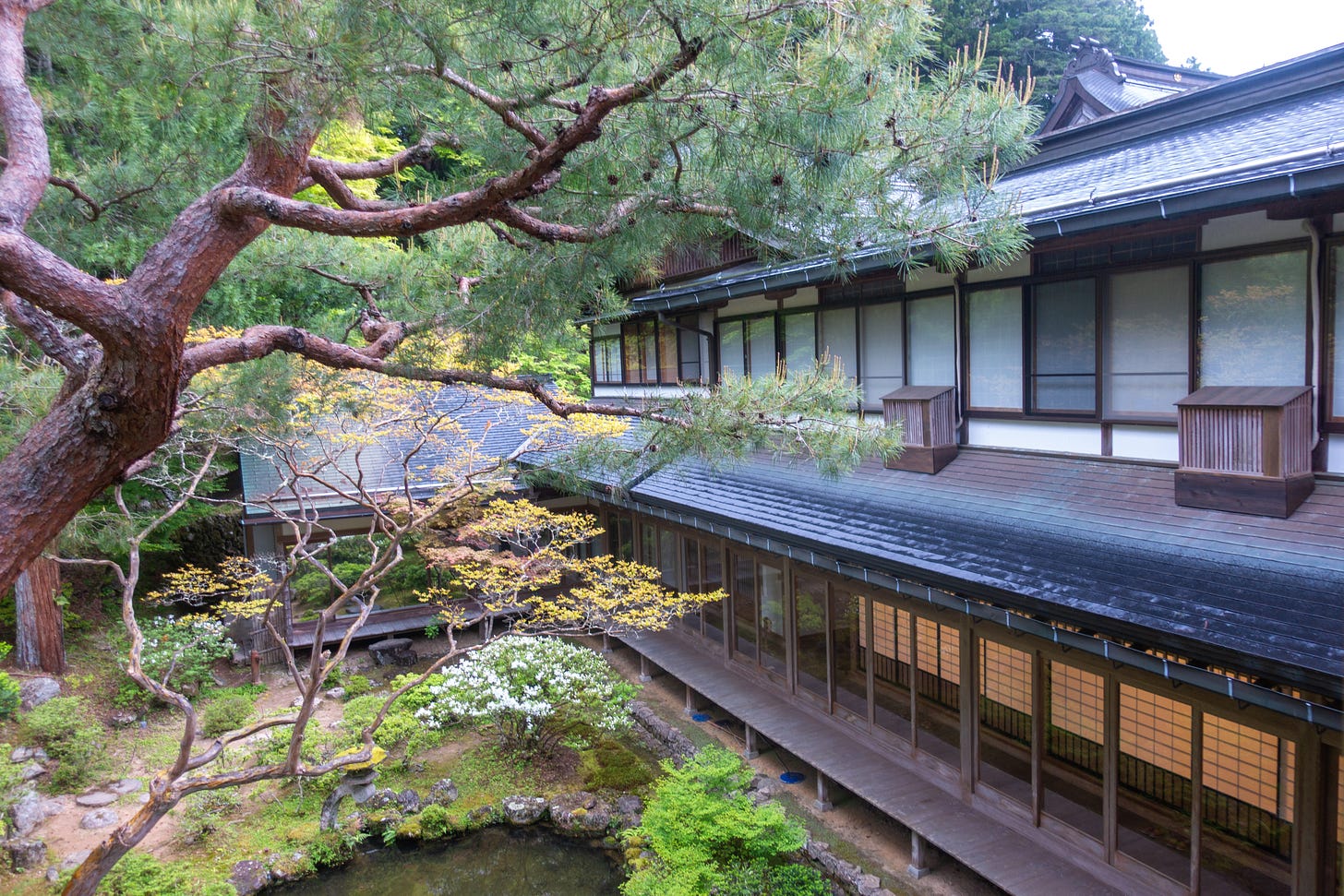
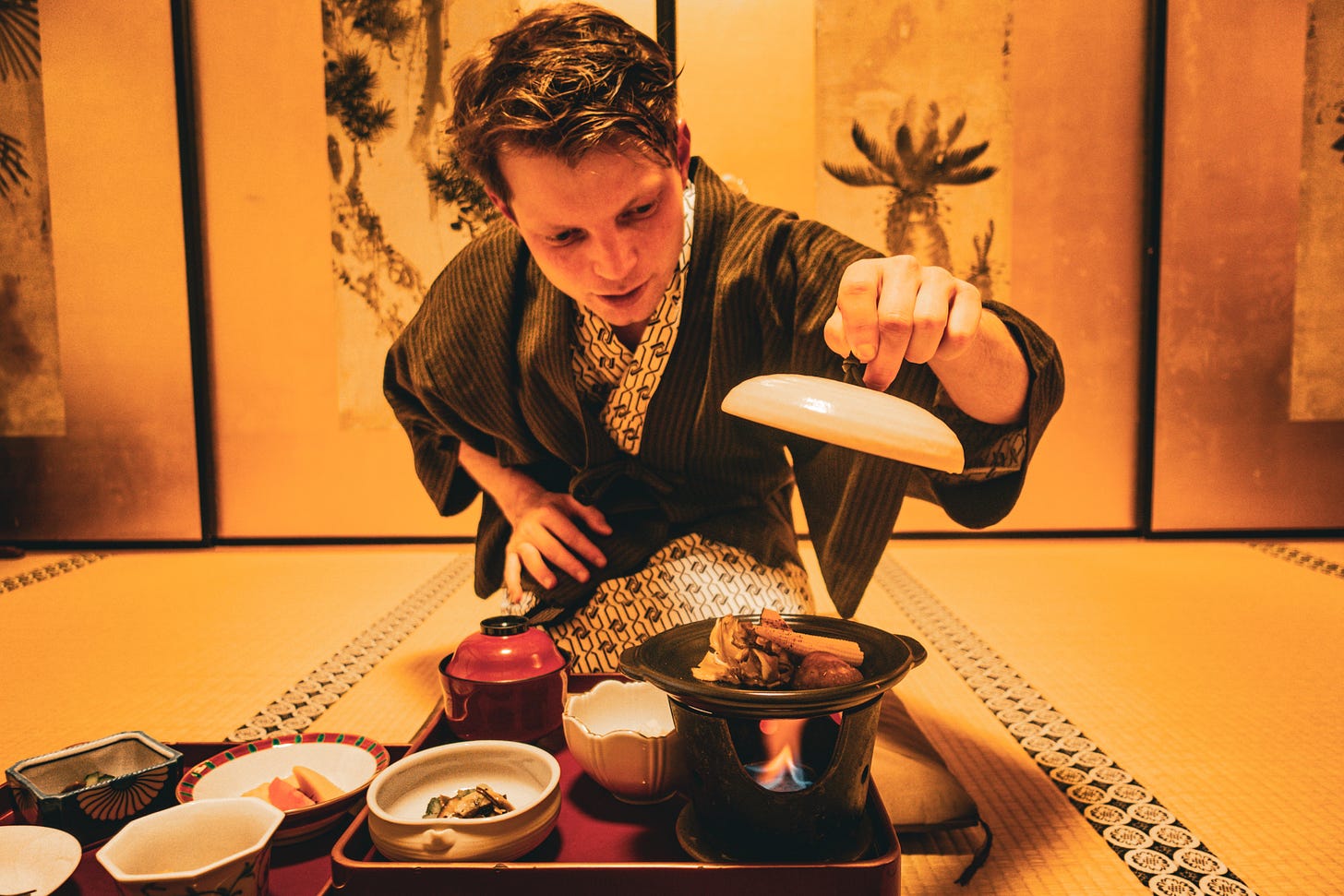
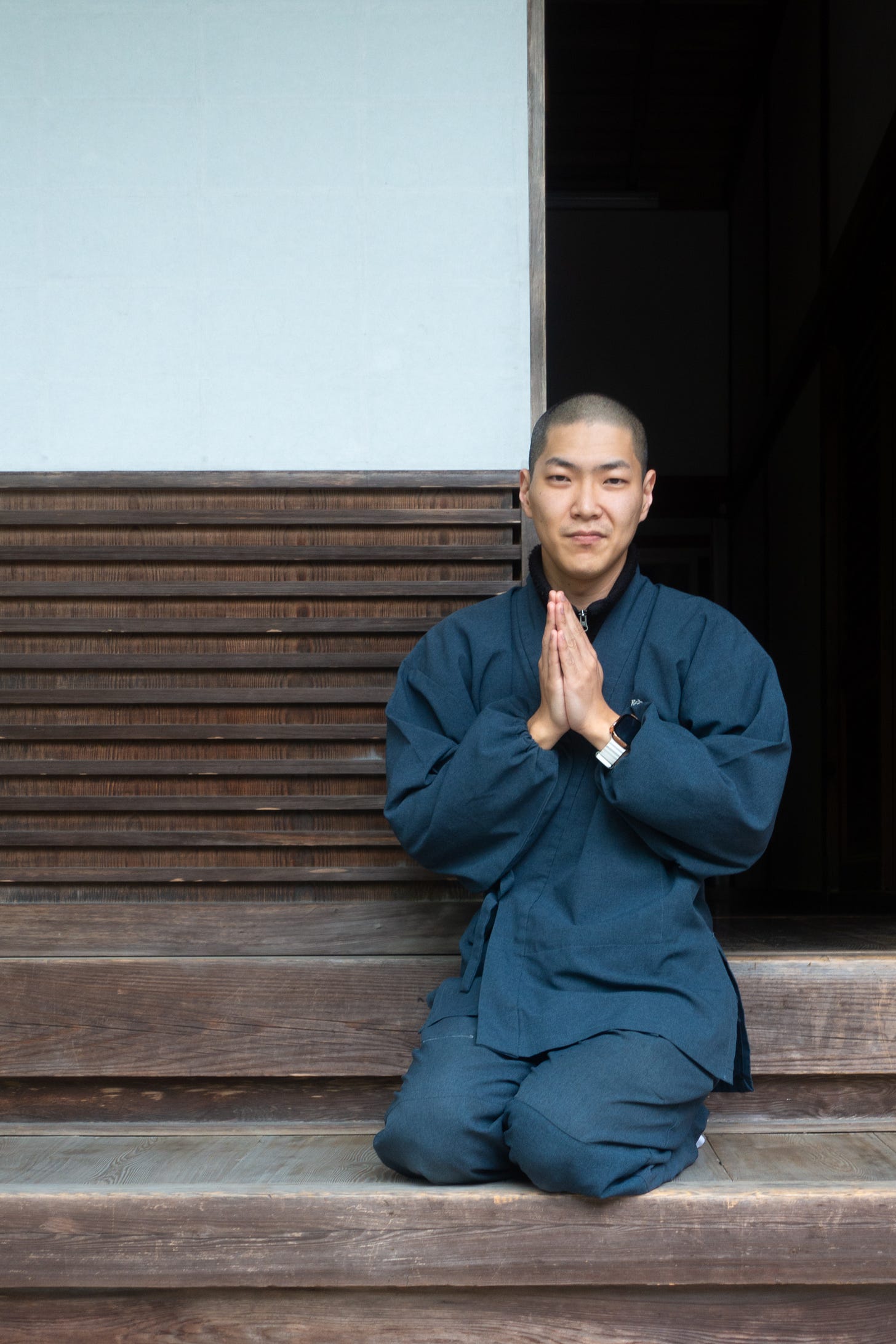
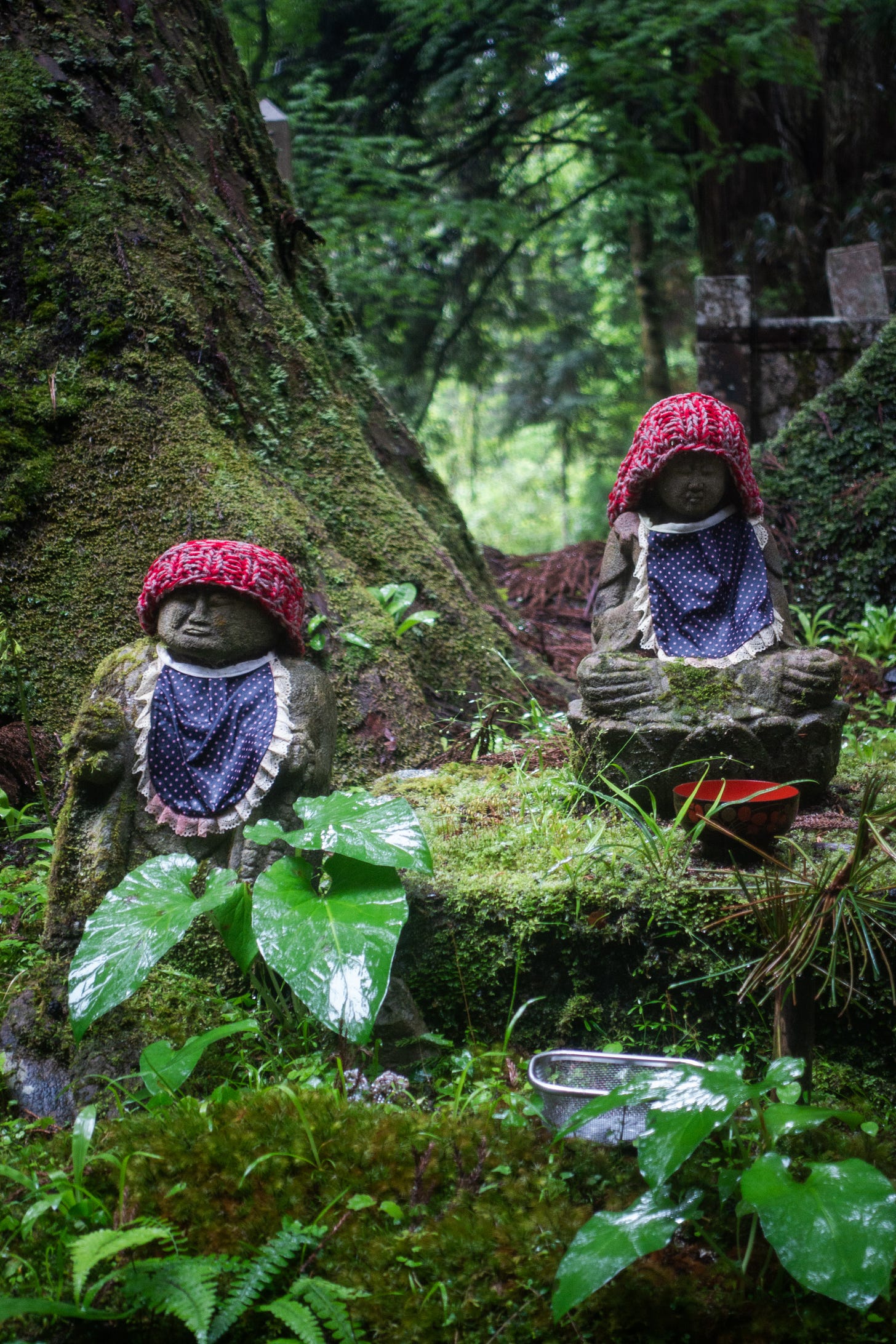
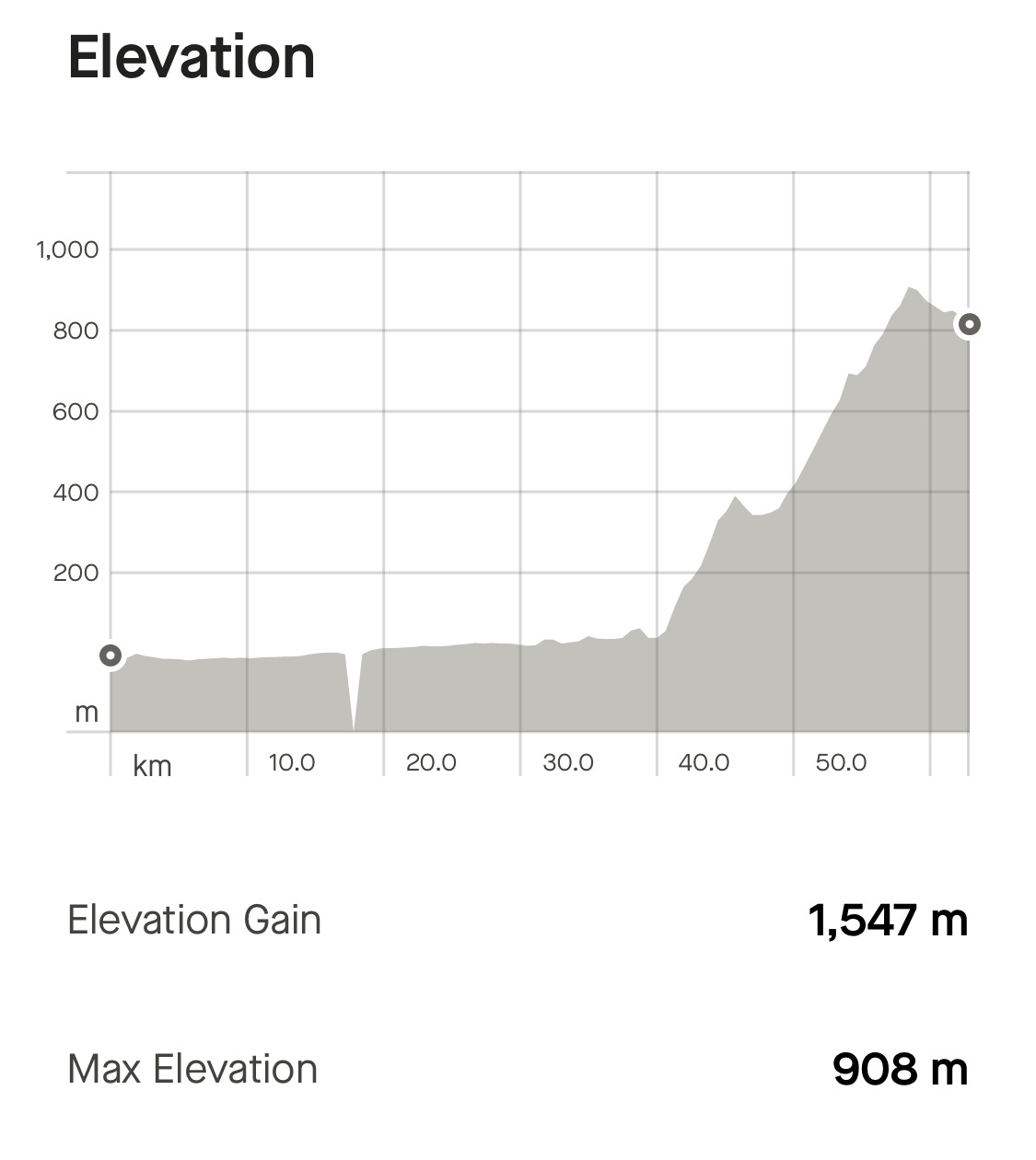
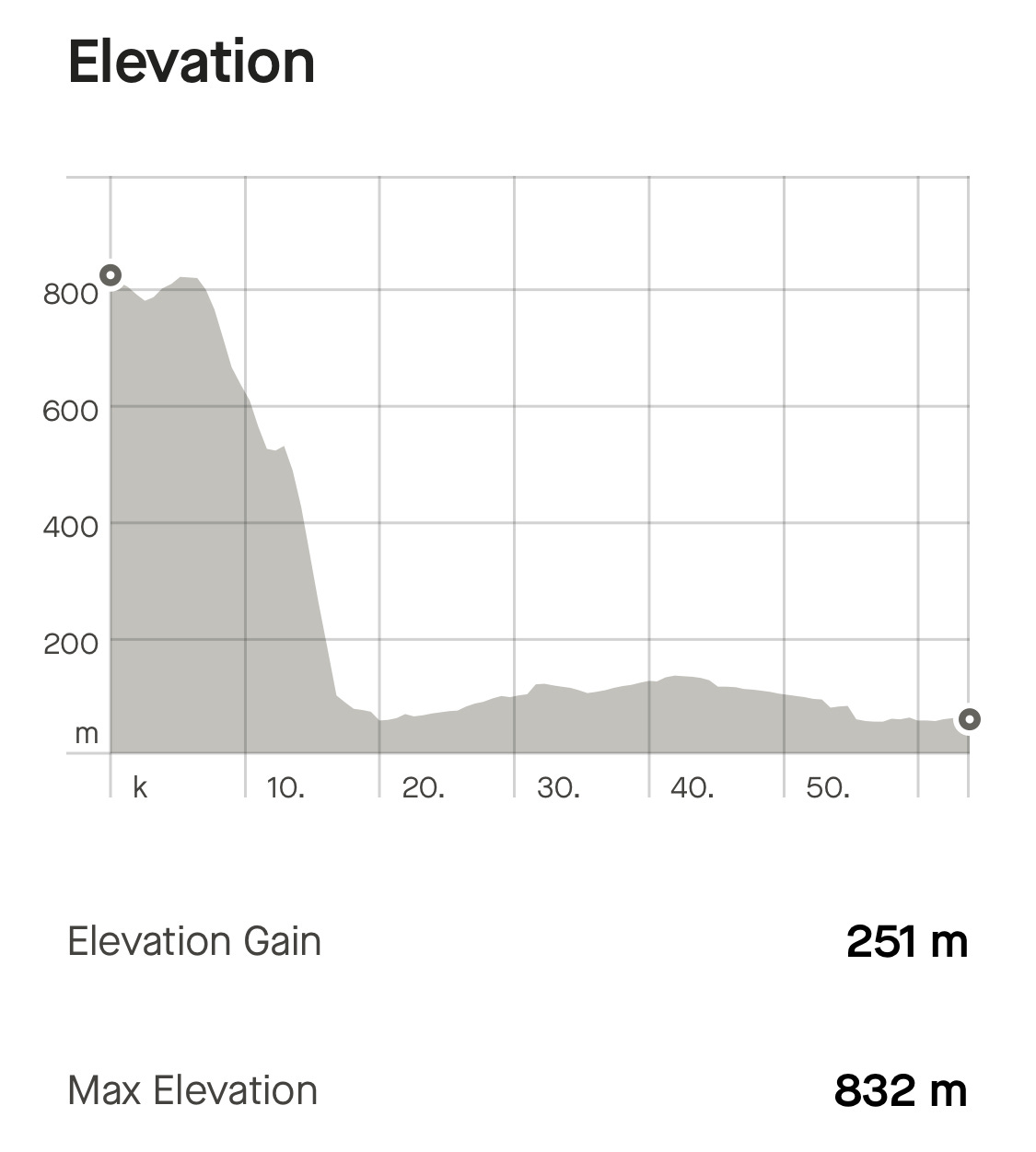
You're making great progress and having a real adventure along the way. I love how the konbini comes to the rescue whenever the going gets rough.